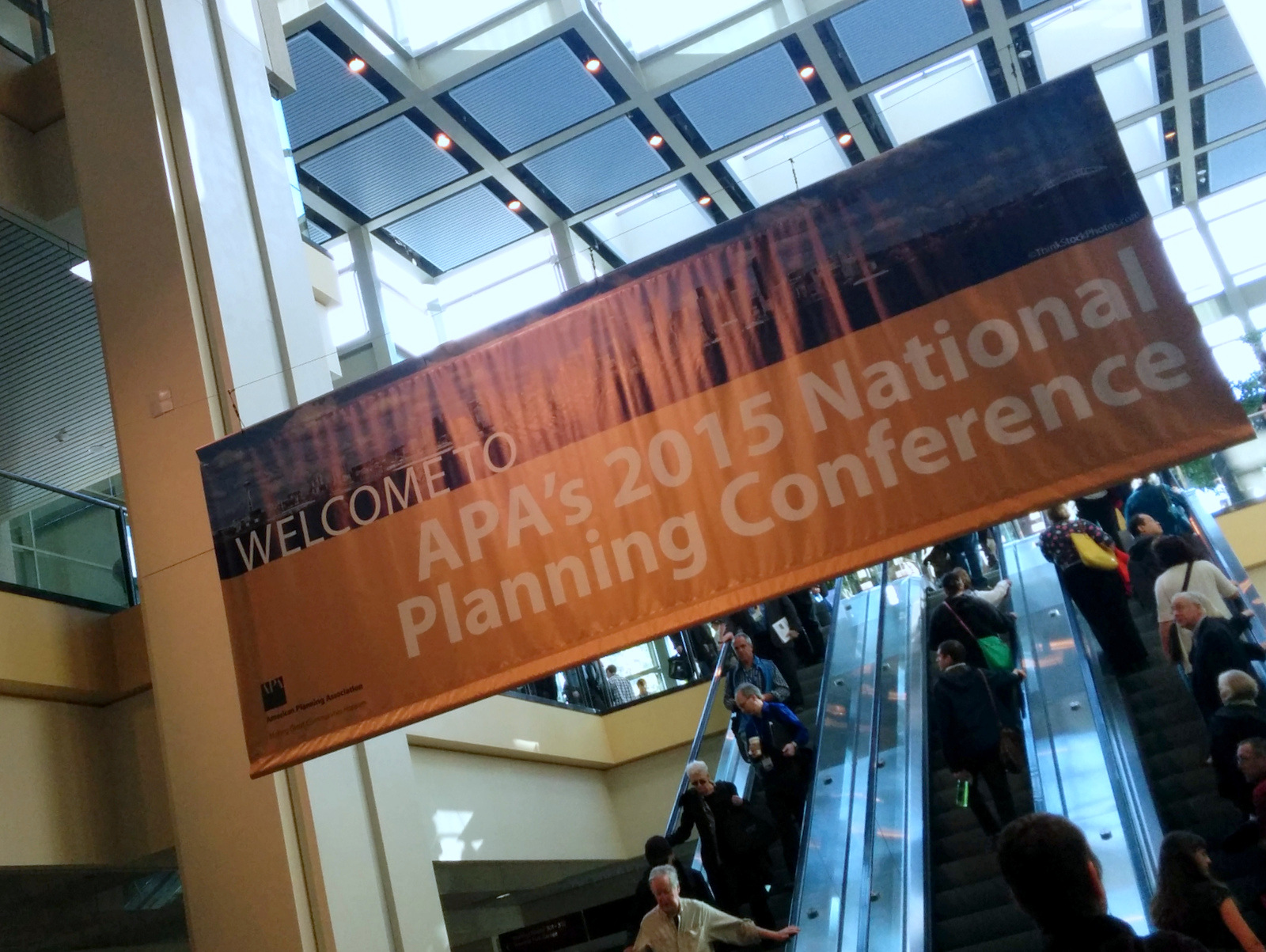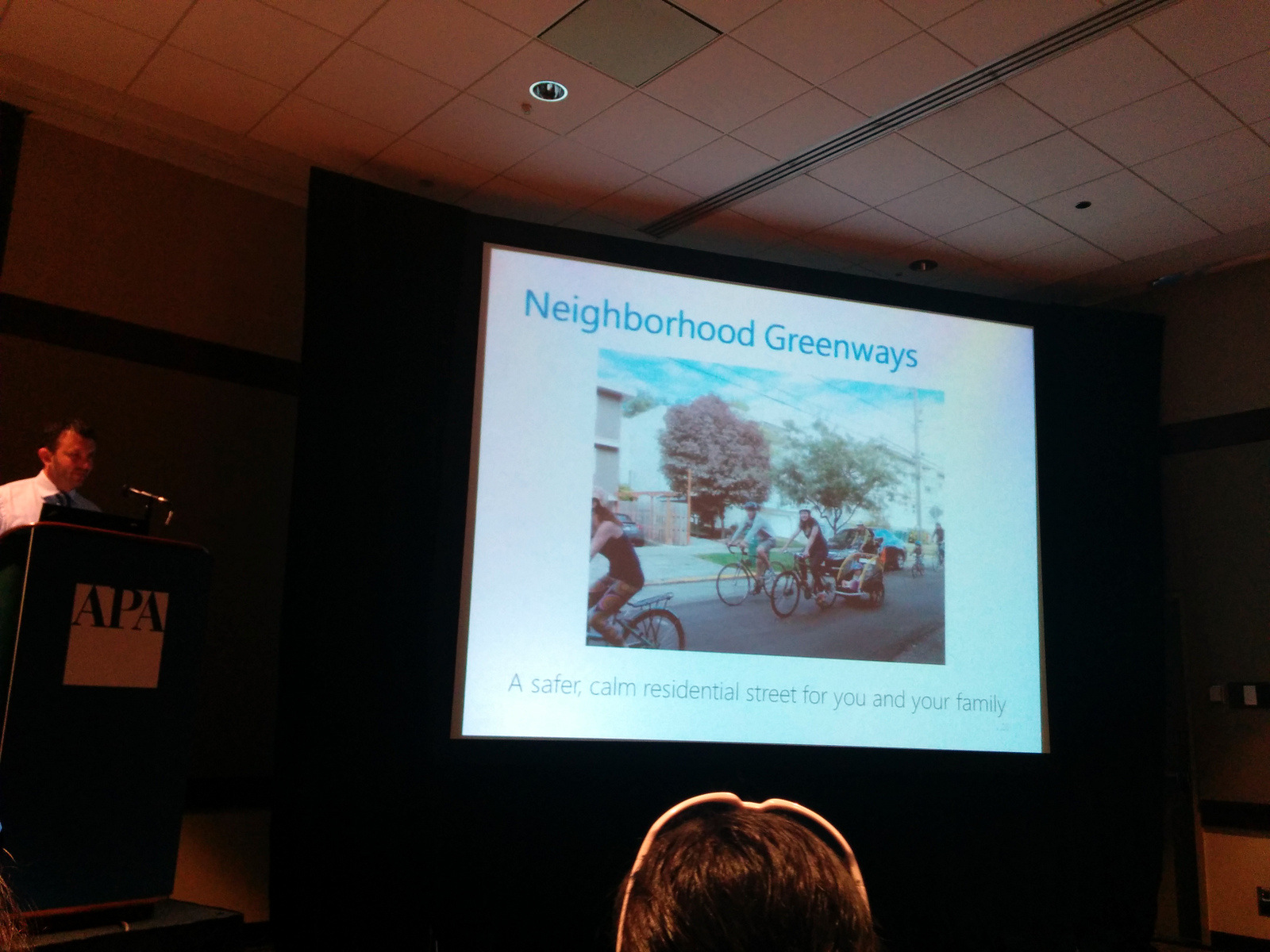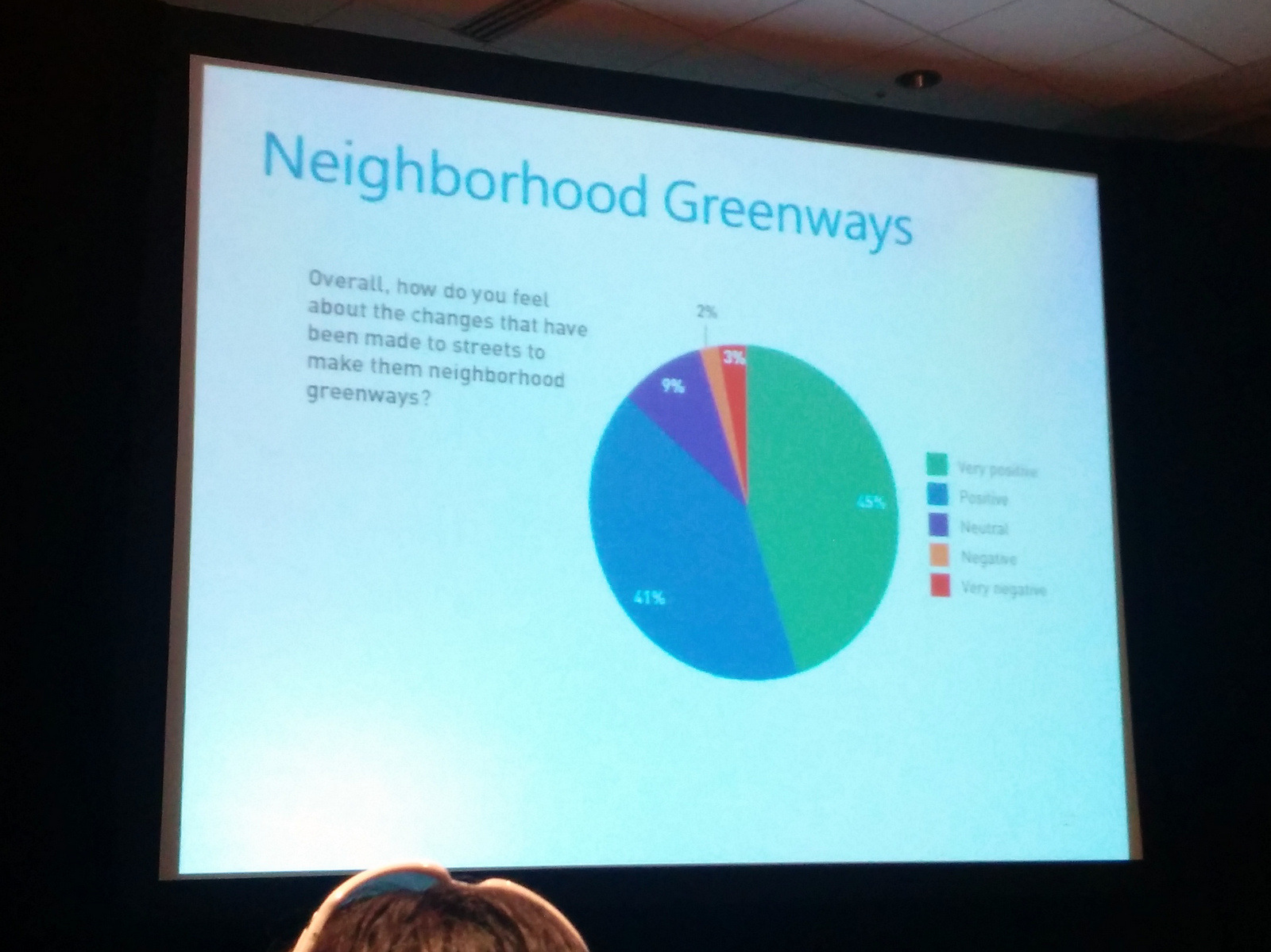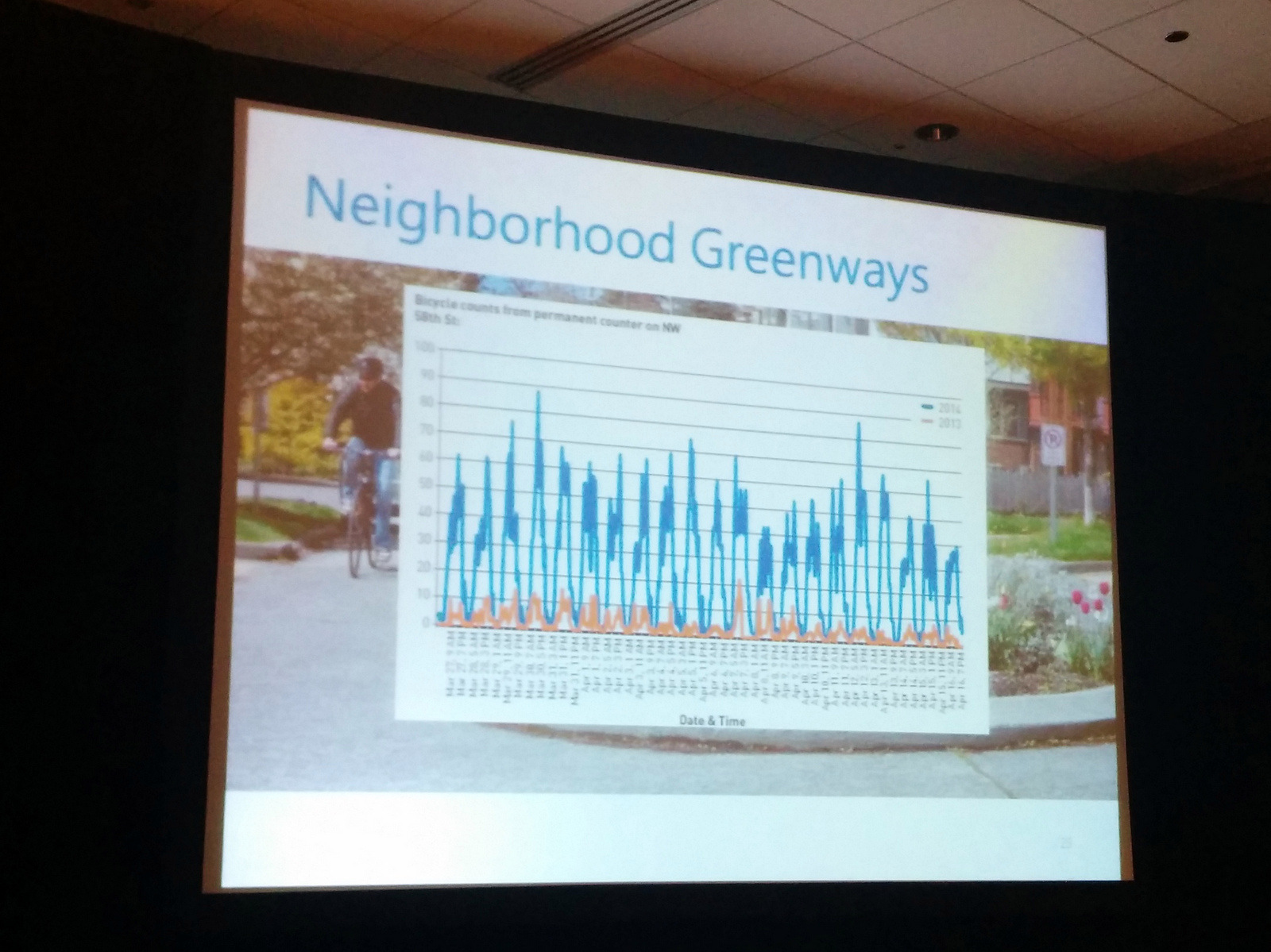Attending the American Planning Association’s conference in Seattle was an easy decision to make. It was primarily over the weekend and my expenses for visiting Seattle are extremely low. While there did seem to be a little poor planning of the session spaces (some sessions were overflowing -literally- with people), the conference was good. I had a chance to attend a number of sessions, including Data Decisions for Complete Streets (CM 1.25), Youth Voice and Engagement in Planning (CM 1.25), Ethics and Images (CM 1.5, Ethics), and Culturally Competent Planning and Engagement (CM 1.25).
Of all the sessions, the Data Decisions for Complete Streets has one of the more interesting presentations. SDOT was presenting their findings from before and after studies related to Neighborhood Greenways (You can see some photos from Seattle Neighborhood Greenway’s “Wonkathon” here). The first conversations about greenways usually start with some support and a couple very vocal people who are very concerned. The most important slide of the presentation is below: SDOT did a survey of neighbors living along the greenway after building the greenway and it turns out that 86% of the respondents were positive to the changes made along the greenway. 45% were “Very Positive” and only 5% had a negative view of the changes.
Nothing the city does gets that type of approval rating.
Another common objection is that “people will not use it, anyways”. Again, thanks to SDOT doing pre- and post-studies, we have some data on that. It turns out that people did start using it quite a bit more than before the greenway was built. They actually presented two greenways, but the graphs both looked the same: The after graph line was significantly higher than the before graph line.




